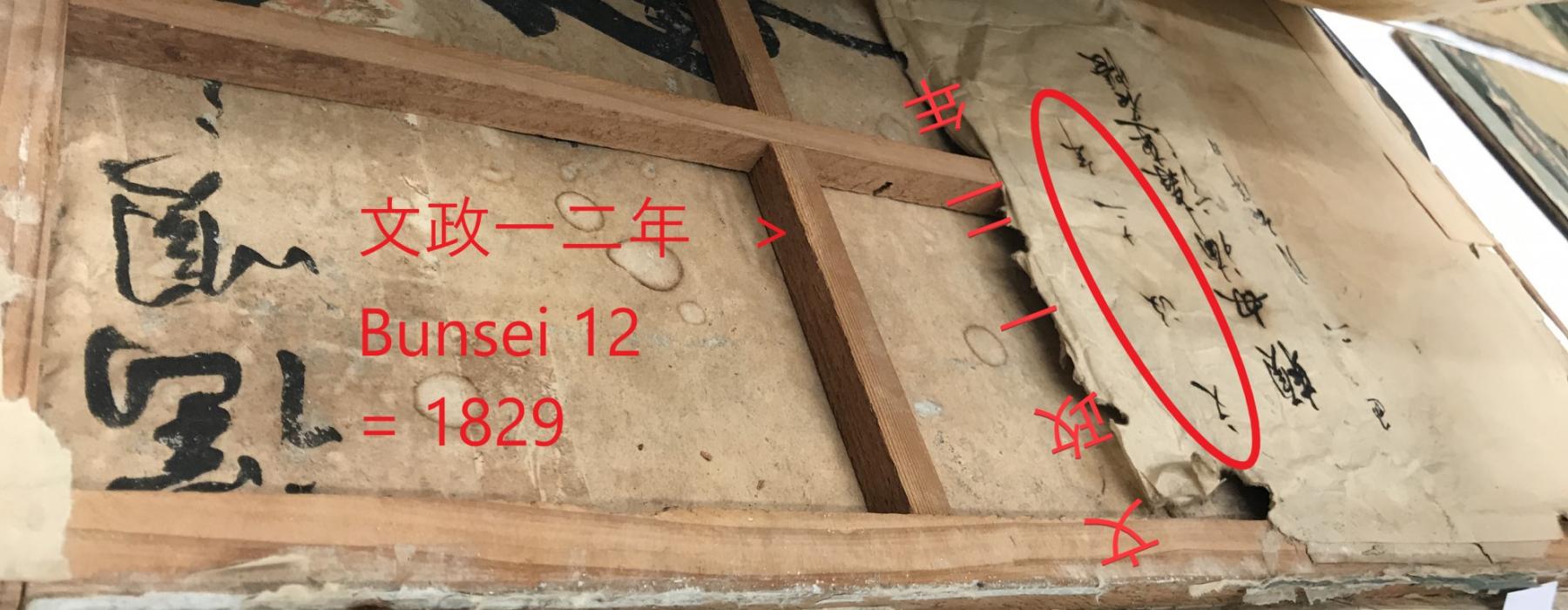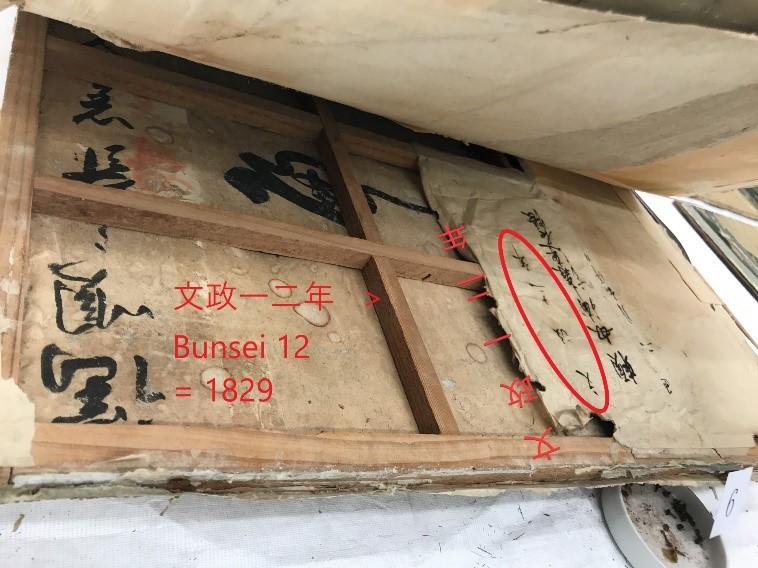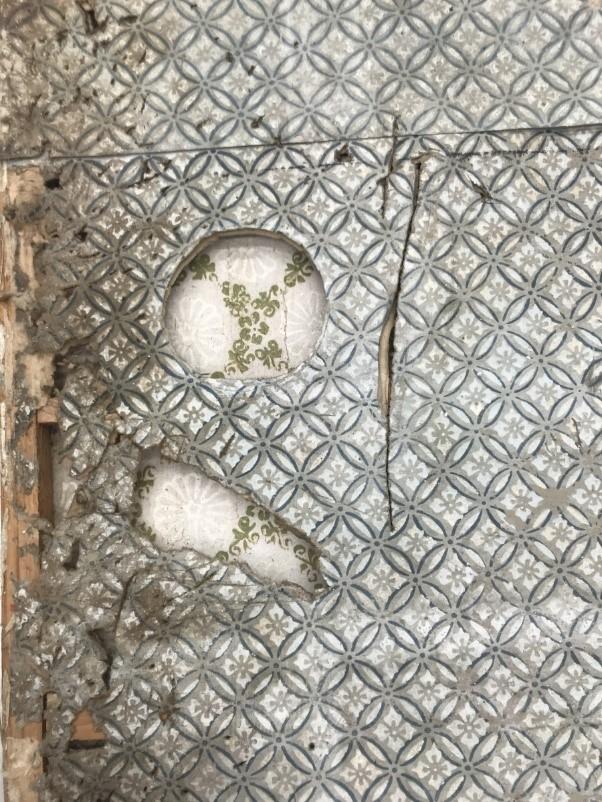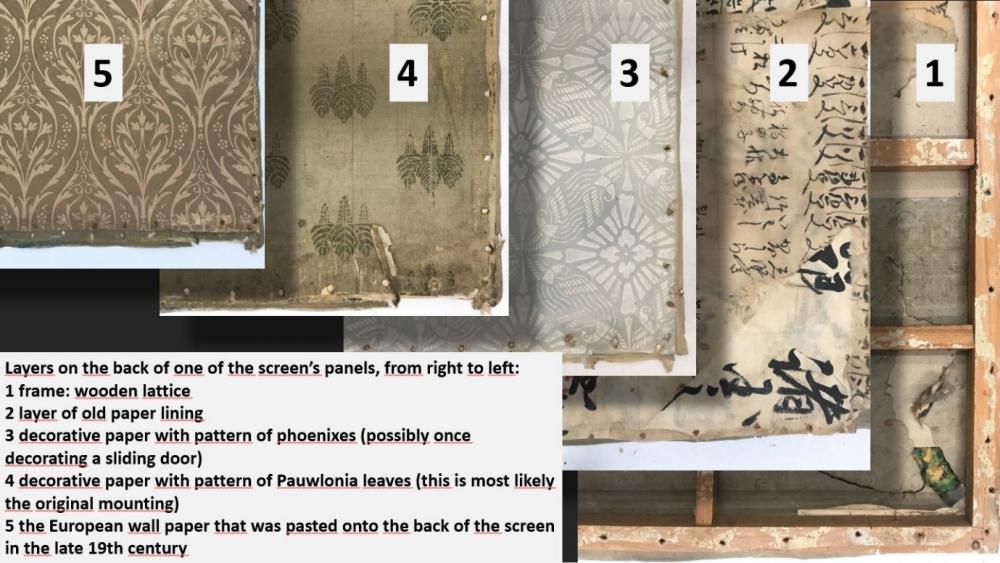
The papers found inside the folding screen confirm that the screen was originally mounted in Nagasaki. We’ve already uncovered the name of a Chinese captain who sailed to Nagasaki, and the names of translators working for Chinese traders in the city. The Kunchi festival, for which Nagasaki is (was? Is it still famous?) famous, is also referred to indirectly. What’s more, all the dateable papers found so far pre-date 1836, the earliest possible year the screen could have been created. That’s significant, because it indicates the Keiga screen has never been remounted. Traditionally, such folding screens are remounted at least once every century. Think of it as a kind of periodic maintenance that helps preserve the paintings. So why wasn’t the Keiga screen maintained? Probably because of the long time it’s been in the Netherlands. A century ago Japanese techniques for restoring folding screens were not available here. These days, we’re fortunate to have Conservation Studio Restorient in Leiden, who are uniquely specialised in Japanese folding screens and scroll paintings.



